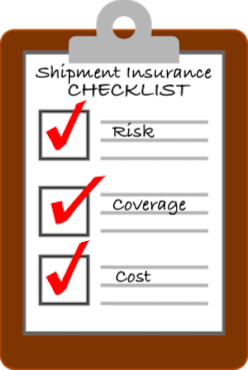There’s basically only one way to ensure that your insurance claim for a damaged or lost package is approved: Read through the insurer’s terms of service, including their instructions for filing a claim; then follow them to the letter.
And be sure to dot your I’s and cross your T’s, because the most common reason for denying a claim is that it doesn’t meet the company’s standards for approval. Insurance companies deal with claims all the time, and they have a process in place. That means that you’ll have to jump through some hoops enroute to getting your claim approved. Not doing so is a sure route to having that claim denied.
The First Line of Defense
The road to a successful insurance claim starts before an item ever leaves your hands. No matter what kind of coverage you buy, chances are the insurer requires items to be packaged appropriately for safe transit. So don’t skimp on bubblewrap, packing peanuts, or sturdy boxes! If you don’t pack an item reasonably well, you’ll void your coverage.
Furthermore, if photos aren’t already part of a listing that you can simply print out, consider documenting your item’s “Before” condition in case there turns out to be an “After”. You might also want to take photos of your packing job as well as the resulting package.
In addition, hang onto any documentation pertaining to an item’s value and other details about the item. Serial numbers in particular are crucial when filing a claim for certain categories of goods.
Declared Value vs Cargo Insurance
One key factor in filing a claim is what type of coverage you have. Did you get it through the carrier? USPS Priority Mail packages and all FedEx and UPS packages automatically come with $100 worth of coverage.
However, the carriers offer what’s known as declared value coverage. The amount of their coverage represents their maximum liability in the event a package is damaged or lost. So if your item is worth more than $100, you must declare its value and purchase additional coverage.
Furthermore, with declared value coverage, you have to prove that the damage or loss was directly due to the carrier’s negligence, or your claim may be denied.
By contrast, third-party insurance providers offer cargo insurance, which pays out without regard to the carrier’s negligence. It’s also usually cheaper and more thorough than the coverage sold by USPS, FedEx, or UPS.
Submitting Your Claim
Most insurers require 4 things:
- A tracking number
- Evidence of insurance
- Evidence of value
- Proof of damage or loss
If you’re filing with USPS, be sure to have the recipient save the original packaging along with the damaged goods, because USPS may ask for them to be presented for inspection. By the same token, some third-party insurers (including ShipSaver) require damaged goods and their packaging to be retained until the claim is completed.
File your claim promptly! USPS allows 60 days for most mail classes. So does FedEx, while UPS allows up to 9 months. ShipSaver allows 120 days for domestic USPS packages and 60 days for packages shipped via FedEx or UPS. The sooner you file your claim, the sooner it can be resolved.
Here’s where to find out exactly what you need to file a claim with USPS, FedEx, UPS, or ShipSaver.



 ShipSaver
ShipSaver April 18, 2019
April 18, 2019 